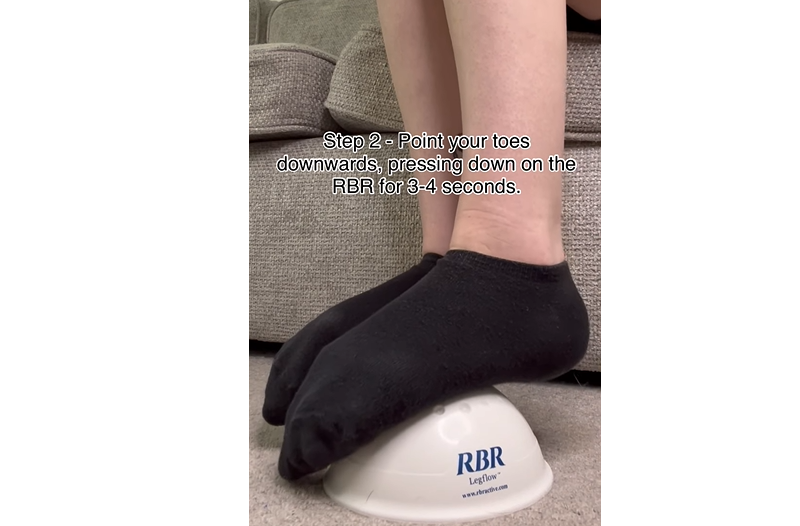RBR Legflow has accomplished something remarkably resilient: it has survived in a field where many promising devices fade before launch. Paul Westerman, a resolute businessman from Cambridgeshire, invented the Legflow, a tiny but incredibly powerful tool for preventing deep vein thrombosis (DVT). It is especially helpful for people who travel, spend a lot of time at desks, or have limited mobility because it uses a series of three foot-based movements to increase blood circulation while seated.
After Westerman’s successful pitch on BBC’s Dragons’ Den in 2022, seasoned retail tycoon Touker Suleyman invested £50,000 and acquired a 35% stake in the business. The financial momentum was supposed to start at that point. Rather, RBR Active Limited has experienced increasing losses in the years that have followed, and its net worth has drastically decreased, going from -£71,893 in 2020 to -£139,740 by 2024. Those figures could seem devastating on paper. In reality, they only provide a portion of the story.
The fact that RBR Legflow keeps selling units in spite of these financial setbacks is what makes its trajectory so unique. At just £15 in the UK and £20 worldwide, the product is still surprisingly inexpensive, making it available to the general public rather than just private clinics or hospitals. It’s refreshing and incredibly effective at reaching the mass market for a device whose efficacy has been clinically tested.
Table: RBR Legflow – Company Overview
| Category | Details |
|---|---|
| Company Name | RBR Active Limited |
| Product | RBR Legflow – a DVT prevention device |
| Founder & Director | Paul James Westerman |
| Headquarters | Sawtry, Huntingdon, Cambridgeshire, UK |
| Founded | April 30, 2018 |
| Industry | Human Health Technology (SIC 86900) |
| Investment | £50,000 for 35% equity by Touker Suleyman on BBC Dragons’ Den |
| Net Worth (2024) | -£139,740 |
| Product Price | £15 (UK), £20 (worldwide), available on Amazon & rbrlegflow.com |
| Official Website | www.rbrlegflow.com |

Poor balance sheets haven’t stopped demand, as evidenced by the company’s ability to maintain sales through both direct channels on its website and listings on Amazon UK. On the contrary. Positive reviews have been shared by customers, particularly those who are coping with chronic leg pain or complications following surgery, confirming its effectiveness. The marketing has focused more on functionality than flash, which is perhaps uncommon in the current healthcare startup environment.
Westerman has produced more than just a product by utilizing a genuine narrative that is based on personal experience. His story is one of perseverance. He speaks not only as a business owner but also as someone who has a profound understanding of the importance of circulatory health, having experienced severe health scares of his own, including a near-death experience just before his wedding. The brand is infused with that emotional nuance, which gives the impression that the consumer trust is incredibly genuine.
The case of RBR Legflow presents a strong argument in the larger framework of healthcare startups. This small UK-based company has continued with what can only be described as quiet consistency, while industry titans like Theranos have fallen under the weight of overpromising and underdelivering. Although the company’s net liabilities have increased from £97,748 in 2020 to £159,851 in 2024, it is still operational and keeps updating Companies House. It is especially remarkable that it has survived in a field where business ventures frequently fail within 24 months.
The collaboration with Touker Suleyman is one element that contributes to this perseverance. Suleyman, who is well-known for his keen intuition and retail savvy, has contributed not only money but also strategic positioning to the product. His faith in RBR Legflow provided it with vital exposure, particularly following the episode’s airing and the sharp increase in sales. It also reaffirmed that, if they address a genuine issue, even low-budget products can become popular.
This story is important for another reason: RBR Legflow is part of a larger trend in which consumers are giving preventive care more importance. From oxygen saturation meters to blood pressure cuffs, the number of devices that facilitate at-home monitoring and intervention has significantly increased over the last ten years. A gadget that promotes leg health during long-distance travel or sedentary activities is highly relevant in this climate. Although the risk of DVT is largely ignored, it continues to be a major concern for elderly people, patients recovering from surgery, and even young professionals who spend a lot of time sitting down.
RBR The technology used by Legflow isn’t overly complicated. Digital dashboards, apps, or batteries are not needed. It is especially innovative for its category because of its simplicity and medically sound mechanics. It serves as a reminder that not all advancements need to be digital; occasionally, a tangible product with solid clinical support can still influence markets.
Although it can be tempting to evaluate a business only on the basis of its net worth, this approach frequently ignores the operational dynamics at play. The cumulative investment in RBR Active’s research, tooling, and logistics is more to blame for the company’s negative net value than any poor management. Delays in profitability are typical for early-stage healthcare products, particularly those with regulatory framework roots. Before the capital appears as revenue on paper, it frequently goes into trials, production, and certifications.
Partnerships and scaling will play a major role in what transpires next. The company’s standing may significantly improve if it is able to obtain distribution through pharmacies or obtain NHS procurement recognition. Additionally, it would be a game-changer if foreign distributors took up the product, particularly in high-risk areas like Southeast Asia or the Middle East.


